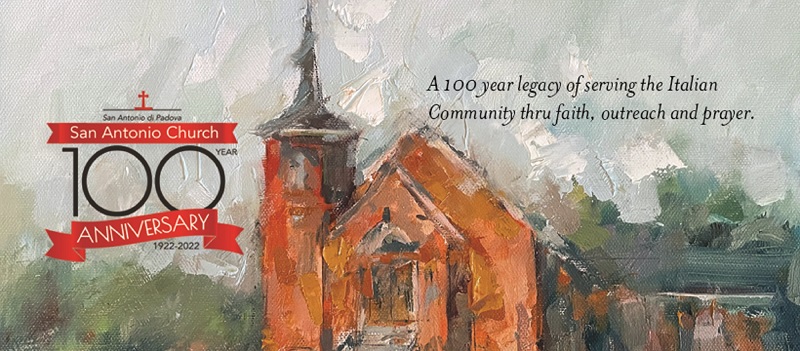We would like to thank everyone who has continued to contribute to the ongoing expenses of San Antonio Church by mailing in their weekly envelopes or by contributing electronically utilizing WeShare . The buttons at the bottom of this post allow you to make online donations directly to the listed account for San Antonio Church.
Weekly Bulletin January 29, 2023
by Terrie Evans
Our parish community will honor and celebrate the feast day of St. Blaise on this Sunday although his actual feast day is Friday, February 3rd. We will have a blessing this morning with two crossed candles to invoke the intercession of St. Blaise for maladies of the throat. The priest will then say: “Through the intercession of Saint Blaise, Bishop and Martyr, may God deliver you from every disease of the throat and from every other illness”. St. Blaise is considered one of the most popular Medieval Saints that is venerated as a Christian Saint and martyr in the Catholic, Eastern, and Oriental Orthodox Churches along with those who are faithful and part of the Anglican Communion Community.
St. Blaise was born in Sebastea (Armenia) and had been a doctor before becoming a priest. He was then elected Bishop by the citizens of Sebastea, now present-day Sivas, Turkey. He became known as a healer of bodily ailments with many faithful flocking to him for cures of all their ills, of the body and spirit. Before his death in 316 AD, St. Blaise became known for performing a miracle on a very sick child who was dying of suffocation from a fish bone being lodged in his throat. After placing his hands on the throat of the child and praying over him, the small child was healed. The first reference to St. Blaise was in the Medical journals of Aetius of Amida (Greek Christian Physician) around 500 A.D. where St. Blaise is invoked in treating objects stuck in the throat. Around 400 years after his death, the Acts of St. Blaise of the miracles attributed to him were written; adding to his popularity throughout France and Germany. Many churches all over the globe have added the Blessing of the Throats near or on his feast day.
St. Blaise is also known as one of the Fourteen Holy Helpers who are a group of Saints venerated by Roman Catholic Christians to interceded against various diseases. These Saints were invoked for almost every aspect of different illnesses that could affect one’s life. This group of Saints, referred to as Nothelfer or “Helpers in Need“ originated in Germany around the 14th Century when the epidemic known as the Black Death (1346-1353) was running rampant throughout Europe. The 14 Holy Helpers who were called upon to cure many ailments are: St. Agathius ( May 7th), St. Barbara ( December 4th), St. Blaise( February 3rd), Catherine of Alexandria ( November 25th), St. Christopher ( July 25th), St. Cyriacus ( August 8th), St. Denis ( October 9th), St. Erasmus ( June 2nd), St. Eustace ( September 20th), St. George ( April 23rd), St. Giles, ( September 1st) St. Margaret of Antioch ( July 17th), St. Pantaleon ( July 27th), St. Vitus ( June 15th). The Black Death started a new wave of piety manifested in the sponsorship of religious works of art. The figurines of St. Blaise and the thirteen other Holy Helpers are displayed in the Chapel in Baden-Wurttemberg, Germany and are still seen as healers for various diseases.
There are various churches dedicated to St. Blaise all over the world as in Germany, the former Abbey of St. Blasius in the Black Forest and in Great Britain in the town of St. Blazey located in Cornwall, where a parish is also dedicated to him. In Croatia, Saint Blaise (Sveti Blaz) is the Patron Saint of the City of Dubrovnik where many festivities are scheduled on his feast day. In Sao Bras, Goa India, St. Blaise Church was built by Croatian sailors in 1541, a replica like the one in their home city of Dubrovnik. There are relics of St. Blaise in churches and chapels throughout Europe and Italy where he is known as San Biagio, where the remains of St. Blaise were shipwrecked off the coast of the Tyrrhenian Sea in 732 during the reign of Emperor Leo the Isaurian. They are now interred on Monte San Biagio at the Basilica, high above the town of Maratea (the town of 44 Churches) in the Province of Potenza. In 1963, there was a 21-meter-high statue of the Christ the Savior built of pure Carrara marble on the mountain dedicated to St. Blaise that rises 68 feet above the town.
There is also a statue of St. Blaise (San Biagio) on a spire of the Duomo of Milan, the Cathedral of Milan that was started in 1389 and took 6 Centuries to complete. In Milan, the tradition of saving a slice of the yearly Saint Blaise Panettone, which is never eaten completely during the holidays, is always eaten on the Feast Day of St. Blaise. In some parts of Italy, volunteer bakers still practice the yearly ritual of preparing the Panicelle for the saints feast day. Volunteer bakers gather to work the dough into the holy loaves in the form of a blessing hand. They start the process on January 31st baking baskets of the blessed Panicelle that will be given to the faithful and the children in their church community to protect them in devotion to St. Blaise. In the region of Campania, locals travel to the Shrine dedicated to San Biagio to show respect and to invoke his help with the special prayers recited for someone they know who needs a special intention.
